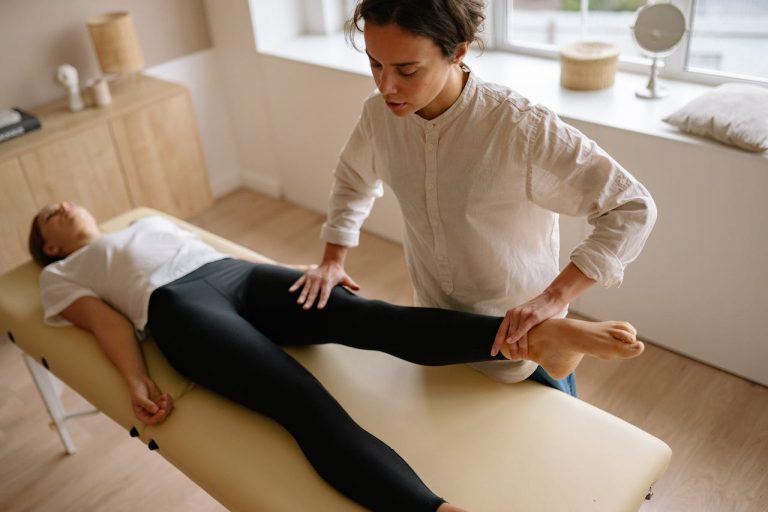Running is an accessible form of exercise that any able-bodied person can try. It’s proven to be one of the best ways of keeping fit as regular bouts of running can increase your cardiovascular capacity. In essence, the more you run, the longer you can run without feeling tired. Running can also lower your resting heart rate, improving your overall health.
Unfortunately, a lot of people that take up running will complain of regular injuries. Despite the fact it is a fantastic form of fitness, running also presents a much higher injury risk than other types of exercise. For example, rowing or using an exercise bike will have lower injury risks than running.
Do you always feel like you’ve got a niggling injury when you run? Now, part of the reason could be genetic and you’re just predisposed to injuries of a certain kind. However, the fact that many other people get hurt while running suggests that the form of exercise also plays a critical role.
Keeping all of this in mind, let’s look at some tips to help you prevent injuries when you run:
Choose the right footwear
The things you wear on your feet will have a direct impact on how likely it is you’ll get injured when running. You see, one of the only negative aspects of running is that it’s a high-impact form of exercise. Whenever your place your foot down on the floor, shockwaves are sent up through your feet to the different joints and bones in your leg. This is because, when you’re running, you’re basically putting all of your weight on each foot with every stride. If you don’t have the right footwear, you have nothing to absorb the shock and stop it from traveling up through your ankle, knee, and hip joints. Therefore, many people suffer from joint injuries in these three places, along with shin splints.
Shin splints are probably the most common running injury, and it’s when your shin bone gets put under too much pressure and the tissue around it gets inflamed and very sore. Switching to some appropriate footwear is the best and easiest way of preventing and solving this issue. If you look at this article with the 9 running shoes best for shin splints, you’ll find a selection of products that are great for runners. Preventing shin splints is all about getting footwear that offers ample support and can absorb the shocks generated when running. Consequently, this can also prevent injuries to the main joints in your feet and legs.
Learn how to run correctly
Believe it or not, but the majority of casual runners don’t know how to run properly. Your technique could be flawed, leading to all sorts of injury issues down the line. We mentioned shin splints and joint problems above, and these can be caused by improper running form as well as bad footwear.
You see, a lot of people make the mistake of running on their tiptoes or heels, which puts more pressure on the joints and shins. Your knees are particularly exposed to bad running techniques, meaning you could develop long-term issues like patellar tendonitis. Many people run and flick out their legs to the side – which indicates an issue with your hip rotation, but it can also cause further hip problems.
Basically, there are many ways to run incorrectly, and you can spot them in yourself by looking down when you run or asking someone to film you. Pinpointing each individual problem will take too long, but here is a video that explains and demonstrates the correct way to run. With the right form, you can greatly minimize the risk of injuries.
<iframe width=”560″ height=”315″ src=”https://www.youtube.com/embed/brFHyOtTwH4″ title=”YouTube video player” frameborder=”0″ allow=”accelerometer; autoplay; clipboard-write; encrypted-media; gyroscope; picture-in-picture” allowfullscreen></iframe>
Be wary of the running conditions
Plenty of injuries have been caused by people running in the wrong conditions. You’ve got the perfect running form and excellent footwear, but you still end up hurting yourself because you chose to run in conditions that really aren’t suitable for running. A couple of points need to be considered here:
- The weather conditions
- The running location
With regards to the weather, do you think it’s a smart idea to run when it’s particularly cold, wet, and icy? You may think you’re being lazy by not running, but the fact is that running in these conditions puts you at an increased risk of getting injured. Icy weather is particularly bad as you can easily slip on black ice that you can’t see, leading to a bad injury. Wet conditions aren’t as bad, but there’s still the risk of slipping and falling. Plus, running while cold is bad for you as your joints and muscles are cold, making injuries more likely. This can be rectified with a warm-up, but it can also be helped if you wear appropriate clothing to keep yourself warm.
As for the running location, we’re talking about where you’ve chosen to run. Are you running on a nice flat path with no obstacles, or have you chosen to run in a horrible hilly area with rocks on your path and lots of obstacles to avoid? Naturally, the flatter and smoother your running path, the less risk there is of getting injured. Once you start adding inclines or uneven ground into the equation, you have a big chance of hurting yourself.
In summary; understand when to run and where to run! Realistically, running indoors on a treadmill is the ultimate solution as the conditions are perfect and there’s less stress on your joints.
Always perform a proper warm-up
We touched upon it above, but a warm-up is critical if you want to prevent injuries when running. Why do we warm-up? Well, we need to get the blood pumping to our muscles to prime them for the activity we’re about to perform. In the case of running, we basically want our whole body to feel warm, meaning the muscles get nice and lax. Running with tight and cold muscles is a bad idea as it means it’s very easy to suffer from a muscle strain, pull, or tear.
Always spend a good 5-10 minutes warming up before you run. There are loads of pre-run warm-up routines out there, but they all follow a similar pattern. Essentially, you want to do some dynamic stretching – which means moving your joints through different ranges of movement actively, rather than standing still stretching. Then you want to slowly elevate your heart rate and get yourself ready to start running. Things like jogging on the spot or doing lunges/squats are great here as they get your legs and joints primed for action.
Know when to take a rest
The final tip is short and sweet: know when you need to take a rest.
A lot of running injuries are repetitive strain injuries that come from running too much. Understand that your body needs time to rest and recover from each run. You can still run every day, but make sure you intersperse heavy runs with light runs. If you run 10k on one day, don’t go for another 10k the next day! Be sure to take at least one full day off running every week as well, just to let your body recover as best as possible.
Follow these tips if you want to lower the chances of getting injured when running. Some trainers will tell people to avoid running because of how damaging it can be to your joints, and the injuries it can cause. However, when you learn to run correctly, have the right footwear, warm-up properly, choose the best running conditions, and give your body time to rest, you can enjoy the benefits of running without worrying about injuries.




